Rojava: A social contract for revolution?
Building Democratic Autonomy in North and East Syria and beyond
Abdullah Öcalan and the development of the Socialism of the 21st Century
Learning from past revolutions: the development of Democratic Autonomy in Rojava
A new social contract for a new society
The art of freedom: The revolutionary practice of the Kurdish Liberation Movement
On the edge of the blade: the balancing act of living revolution
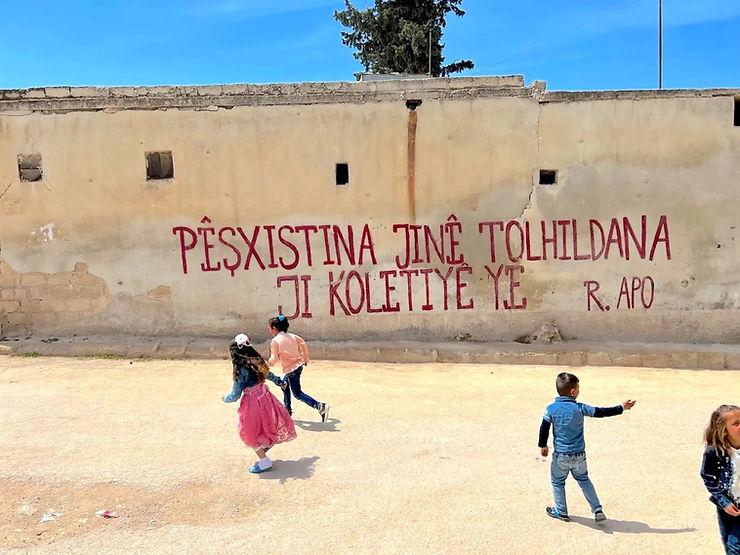
There is a common vision of what revolution means and looks like that portrays it as a moment when all the evils of the world are finally defeated. Such an image is most likely the result of oversimplified accounts and deliberate manipulation of the truth, designed to persuade people to abandon their struggle for freedom at the first sign of inconvenience. In reality, according to all accounts of past and present experience, revolution is neither confined to a single moment, nor is it the final victory of all that is good. Rather, it is a never-ending struggle in which the underlying contradictions of society are brought to the surface and constantly confronted, unleashing both the best and the worst of humanity. It is both terrifying and beautiful, and it does not easily fit into simple narratives.
Such is the reality of the “Rojava Revolution”, which started exactly twelve years ago in the Syrian occupied region of West Kurdistan and today has spread to the biggest part of North and East Syria. In this time, one of the topics that has raised more curiosity and misunderstanding about the revolution, is that of its Social Contract. Written in 2013 and adopted simultaneously in early 2014 in the three regions of Rojava that had been liberated at that point, it represented the consolidation of the regions’ autonomy from the Syrian state as well as the crystallization of the achievements of the revolution. For this reason its continuous evolution, having being updated two times since then, reflects the way the revolution has developed over time. By looking at the Social Contract we can learn about the realities and contradictions inherent in any revolutionary process, as well as the unique approach that the Kurdish Liberation Movement has taken to confront them.
To understand the role of the Social Contract in North and East Syria as well as in the wider revolutionary political strategy of the Kurdish Liberation Movement, we will first examine its ideological foundations in the thought of Abdullah Öcalan. Next we will look at the particular conditions of the Rojava Revolution and how the elaboration of the Social Contract was a solution to several challenges it faced. And finally we will explore the potential dangers every revolution faces, how can they be fought against and what role the Social Contract in North and East Syria has played in this struggle.
Abdullah Öcalan and the development of the Socialism of the 21st Century
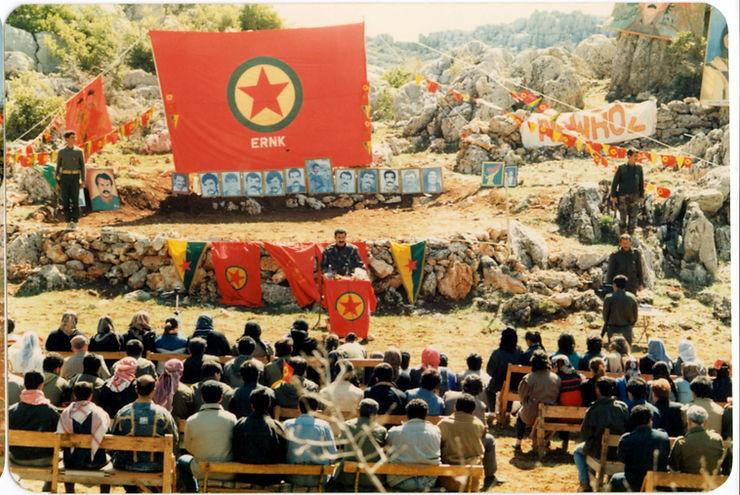
It is impossible to talk about the Rojava Revolution without mentioning its inspiration in the thought of Abdullah Öcalan and the influence of the 50 years of struggle of the PKK movement. In particular it must be linked to the efforts of the PKK since the 90s to develop a new revolutionary paradigm that could replace its old Marxist-Leninist orientation. This originated from a process of self-critic and reformulation in which the movement evaluated its own mistakes and limitations as well as the failures of the socialist and revolutionary movements of around the world, which became undeniable after the fall of the Soviet Union and the dissolution of so-called “really-existing socialism”. From it it was concluded that there was the need to fundamentally change the vision and strategy of the movement. This discussions started to be clearly formulated and put into practice after the 2000s, following the publication of several books written in prison by Abdullah Öcalan which developed and synthesised this new understanding. The result is what is known as the “Paradigm of Democratic Modernity”.
One of the main points of departure was the analysis of the relationship between society, the state and revolution. From the experience of the 20th Century of trying to build “state socialism” or “socialist states” as well as the research of the history of development of the state since antiquity, it became clear that the state could not be the path towards the development of socialism in society. In fact it was concluded that the state and society were fundamentally different from each other and represented completely opposed interests and ways of understanding the world. On the one hand, the state is based on the interest of a minority of people trying to monopolise wealth and power by developing a hierarchical system that enslaves society and an ideological apparatus that justifies it. On the other hand, society is a natural development based on democratic and egalitarian values and relationships that gave birth to the human being as we understand it. In this light, socialism was understood to be the modern representative of the long struggle to defend society and its values. Therefore, the standard of success for a socialist revolution is not whether the state has been conquered or even destroyed, but how much society is able to organise itself and live according to its own moral and political principles.
At the same time, the nature of power itself and how it becomes dominant in society was deeply examined. As Abdullah Öcalan put it “Where do the political power holders get their enormous strength? How do they succeed in confiscating and commanding so much value?”1. Or, in other words, how is it possible that a minority of people has managed to subjugate the majority of society and even convinced them to accept this form of slavery as justified? It is obvious that physical force by itself cannot accomplish this. Power also needs of an ideological force to subjugate society. Especially today, as power has extended its reach to every part of society and every part of the world, it is more necessary than ever that people, for the most part, are made willing participants of the system. This means that the mentality and personality of people must be shaped in order that they act according to the interest of power while feeling that they are freely choosing to do so. On this, Abdullah Öcalan wrote:
“If we look closely we can see that the intertwinement of society, power, and the state has been developed using nationalism, sexism, religionism, and various scientisms, whereby, to sustain the nation-state, everyone is drawn into a paradigm where ‘everyone is both power and society and the state and society.’”
In other words, under the modern nation-state society has been made to identity itself with the state and its interests. And as this happened, the state and power infiltrated every aspect of society and made it dependent on itself. As Öcalan writes: “There is no social activity that power doesn’t meddle in.” So as long as this doesn’t change, even if the current form of the state is destroyed or replaced by a “socialist state”, it will simply be rebuilt to fill the void left. Both because society has come to believe in its necessity and because it has lost the knowledge and capacity to live without it. This becomes evident just by going back a hundred years in the past, where we can see how back then most communities in the world were able to obtain almost everything they needed to live, either by producing it themselves or with the help of others. Instead today most people in the West are completely dependent on buying things and on the state or the market providing them with security, education, entertainment and everything else. And this in turn it’s dependent on a complex networks of international institutions, treaties, infrastructure, trade routes and military and geopolitical balances. Therefore any revolutionary process that tries to suddenly disconnect itself from this global order will face the combined attacks and hostility of all the forces of Capitalist Modernity.
In consequence, our vision of revolution for today must reflect this reality. This is why Abdullah Öcalan proposes the concept of Democratic Autonomy as a way out of this deadlock. What this means is the organisation of society on a democratic basis outside of the state by developing a democratic mentality in society step by step, rebuilding its institutions and slowly reducing the role and influence of the state until it becomes superfluous. It could be seen as a transitional phase, where instead of destroying or taking over the state, society replaces it little by little with democratic institutions.
Democratic Autonomy can be implemented in two ways. One takes place when in possible to reach an agreement with the state, whereas it recognises the right of society to organise itself and in turn society recognises the right of the state to continue existing and maintain some of its functions relating to security and international relationships. This way democratic autonomy can be built without immediately threatening the international system of nation-states and hopefully avoiding a total war situation. On the other hand, if the state refuses to recognise the democratic autonomy of society, society then has the right to declare it unilaterally, preparing itself to defend it until the state can be convinced to negotiate. Under this paradigm, the role of the revolutionary is mainly focused on ideological education, social organisation and the defense of society against attacks. All with the objective of building Democratic Autonomy.
Learning from past revolutions: the development of Democratic Autonomy in Rojava
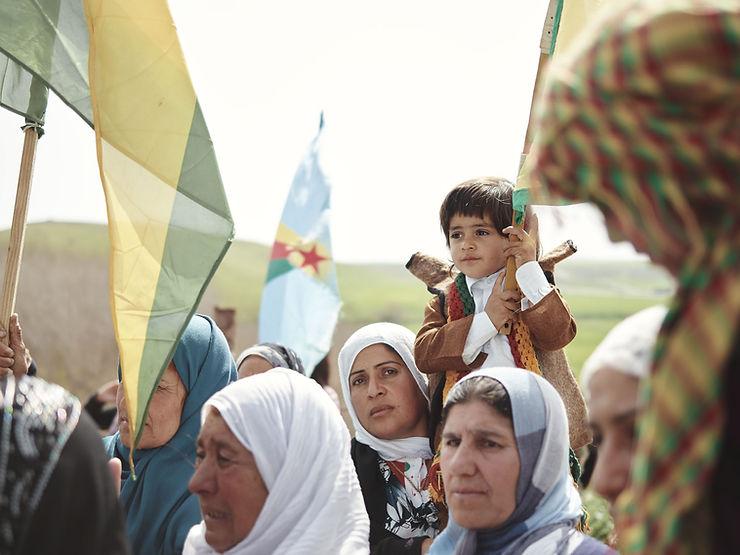
In this light we can better understand the situation in North and East Syria after the revolution and what lead to the declaration of the Social Contract in 2014. At this point, Kurdish society in Syria had been organising for years under the new paradigm. Even though under the Baathist regime it was not possible to organise openly, society had been educated, underground councils had been built and self-defense units had been organised. After the start of the Arab Spring, this underground organisation was able to come out to the surface and develop. And once the Syrian regime was kicked out from Kurdish cities in 2012, the direct democratic system of communes and councils became the main way of providing for the needs of society in the absence of the state. So by 2013 a lot of Kurdish society was actively involved in it or at least recognised its legitimacy and utility. Democratic Autonomy was being put into practice and proving its feasibility.
But two main problems remained. First, ethnicities other than Kurdish did not trust the system and for the most part didn’t want to participate in it. As they did not have a history with the movement, they were used to a traditional party system in which each ethnicity organises independently following their own interests. Therefore they were afraid that participating in the system would mean having to be subjugated to the rule of Kurdish people, who were the main promoters of it. This mistrust was shared by almost every other political party and organisation. Second, international institutions like the UN did not recognise the legitimacy of a system of direct democracy that did not look even close to a traditional state. So it was very difficult to find international support outside of some small radical leftist groups, leaving the revolution isolated and surrounded and with no chance of being officially recognised.
With a divided society and lack of international support, the revolution was facing the possibility that the void left by the state would be filled by some external entity or a local actor opposed to the revolution at a point where it was not possible for society to completely fill the void by itself. One option at this time would have been to simply ignore this reality and insist on focusing only on the directly democratic institutions. This would have meant that those parts of society which did not support them would have probably develop their own separate state-like structures and allied with local and international hostile powers to, eventually, violently crush the revolution. The other option would have been to force every part of society to participate in the system of communes. This by itself would necessitate the creation of an apparatus of social control and repression that would mirror that of a state. And it is quite obvious that direct participatory democracy can never work effectively if the people itself doesn’t want to participate and put the decisions into practice. That means that as the system inevitably failed at its base, the upper layers would have to take more and more responsibility, until it eventually it became a hierarchical power structure. Thus creating a state and completely destroying or invalidating the democratic institutions of society.
Based on the experience gained from previous revolutionary experiments, these two options were seen as unacceptable. So instead they pursued a third way, deciding to fill themselves the gap left by the state with a quasi-state institution that was amicable to the revolution. At the same time the system of direct democracy was left intact and still organised most aspects of every-day life in practice. In this way they effectively created a dual-power situation and the Social Contract was the reflection of it. Through a process of discussion with every part of society and the participation of most political parties, the Social Contract was written and approved, outlining a system of parliamentary democracy that would exist in parallel to the system of direct democracy.
A new social contract for a new society
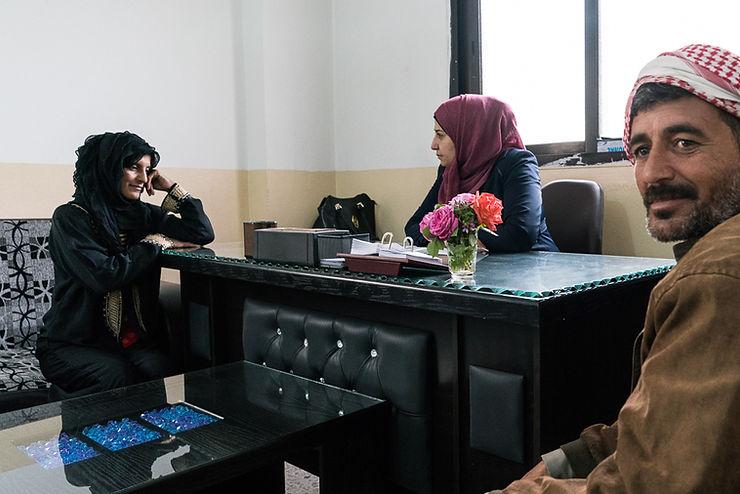
In this context, the revolution was betting on its capacity to continue developing and expanding and to not be consumed by the state-like institutions. That, as people got to know the movement, the ideology and got to see the utility of the system of democratic autonomy in practice, they would choose by themselves to participate. To evaluate whether this is happening in practice, we can look at the evolution of the social contract, as this is a document approved by the immense majority of the population.
The first version of the contract of 2014 declared to follow the “principles of Democratic Autonomy” but in its content was not so different from the constitutions of most liberal democracies; even if it was an incredibly progressive and democratic one. This was because it represented a compromise on which all parts of society could agree. We should consider the fact that it was able to bring every part of society together and avoid a catastrophic division. This alone was a victory in itself. Many political parties that previously refused to work together, became involved in the process and agreed to follow the Social Contract, thus avoiding internal divisions and ethnic conflicts. And it guaranteed many rights that until then were inconceivable in the region. Even if it didn’t reflect the complete aspirations of the revolution, it allowed it to survive past the initial critical stage.
By 2016, when a new version of the contract was approved, the situation had radically changed and this was reflected in the Social Contract. This time the “Democratic Federation of Northern Syria” declared to be “based on a geographic concept and an administrative and political decentralization”. This was accomplished by declaring that “all segments of people, in particular women and youth, shall form their organizations and democratic institutions.” And this was put in practice through the system of direct democracy:
“Peoples and groups in ‘The Democratic Federalism of Northern Syria’ shall organize their free and democratic societal lives based on forming communes, societal institutions, unions, and assemblies. The democratic system of society shall be developed and established based on these institutions.”
The commune was defined as “the essential basic organizational form of direct democracy.” and the councils as “the societal units which represent the people, discuss and decide its affairs, and formulate policies” which “protect society, ensure its continuity, and secure the realization of its goals, in the political, social, cultural, and economic fields. They organize society by enabling direct democracy and set rules and principles related to democratic and free life.”
As we can see, by this point the system of Democratic Autonomy and its democratic institutions had become accepted by most of society and therefore this was reflected in the Social Contract. We should also mention that by 2016 many other regions had been liberated, meaning that the revolution was both progressing internally as well as expanding its reach.
Finally, the newest version of the contract was approved in 2023 after a long process of discussion and popular consultation. The organisational structure it outlines is very similar, with some significant development. Such as the decentralisation of the confederal system at the municipal level and the reinforcement of the women’s communal economy. But in its aims there is a clear radical development in the consciousness of the people that is being reflected in the Social Contract. It’s worth quoting its preface in full to see this (parts highlighted in bold have been added by me):
“We, the daughters and sons of North and East Syria – Kurds, Arabs, Syriac Assyrians, Turkmen, Armenians, Circassians, Chechens, Muslims, Christians and Yazidis – in our awareness and belief of the duty upon us from the martyrs, in response to the demands of our peoples to live in dignity, and in response to the great sacrifices made by the Syrians, came together to establish a democratic system in North and East Syria to form a basis for building a future Syria, without racist tendencies, discrimination, exclusion or the marginalization of any identity.
Together, we resisted against tyranny, betrayal, and extremism, and we rejected all types of nationalist, religious, gender and secular fanaticism. Our adoption of the principle of the democratic nation strengthened our national unity, gave us strength in the face of our enemies and became hope for our friends.
We, the peoples of North and East Syria, have suffered from successive undemocratic regimes in Syria, from the policies of thousands of years of state centralization and authoritarianism and from the practices of capitalist modernity that dominate the region.
We have been exposed to all kinds of injustice and oppression over many years.
We are determined to establish a democratic system based on democratic autonomous administrations, achieve justice and equality among all peoples and components, preserve all cultural, religious and ideological identities, spread a culture of diversity and tolerance, reject all types of violence and take the principle of legitimate defense as a basis.
The social revolution that was achieved under the leadership of women in North and East Syria opened the way for an intellectual and social renaissance, and women became a fundamental pillar of our democratic system. The struggle and sacrifices of youth in bringing together all components also played a historical role in consolidating and strengthening the brotherhood of peoples.
The Democratic Autonomous Administration, which was achieved by the will of the people, is based upon anecological democratic society, co-chairing, communal economy, social justice, and the principle of democratic confederalism.
The Democratic Autonomous Administration of North and East Syria is an integral part of Syria. With the democratic system it established, the common values it created, and the political positions it expressed over the past years, it formed a strong foundation for true unity, thus becoming the basis for building the Democratic Republic of Syria.
We, the peoples of North and East Syria, with all its components, have decided, with full freedom and choice, to write this social contract from the system of values and democratic civilizational heritage of the Middle East and humanity as a whole, so that this becomes a guarantee of freedom, peace and unity among Syrians.”
The explicit mention of concepts such as “democratic nation”, “democratic confederalism”, “social revolution” and “leadership of women” demonstrates that society has come to accept the paradigm of Democratic Modernity more and more. This is also significant because it was in 2019 when DAESH was finally territorially defeated and the areas it controlled were fully liberated. This means that the administration now includes not only the Kurdish region of Rojava, but also Arab-majority regions of Syria that, previous to the revolution, had had almost no contact with the movement and had even been occupied by DAESH for years. That these regions have approved this version of the Social Contract shows that the system of Democratic Confederalism is becoming a realistic solution not only for Rojava (and the rest of Kurdistan) but for all of Syria. And therefore potentially for the rest of the Middle East.
And as a final note, at the time of writing of this article in July 2024, it has just been announced that the Women’s Council of Northern and Eastern Syria is working on the elaboration of the Women’s Social Contract. In consequence, public meetings and discussion with women of different ethnicities and backgrounds are taking place to decide the contents of it. At this point it’s too early to say anything else about what this will mean or what it will change. But at a time like this, when the Turkish state is targeting civil infrastructure with continuos bombings and launching incursions on the territory of the administration through their proxy Islamist militias, to take such a historical step shows the deep commitment and will of the people to continue expanding this revolution even amid the worse of war conditions.
On the level of recognition by international institutions, we can say that there is a long way to go. The recognition of the DAANES by states is not in the interest of Turkey and the USA, which see a great danger if this model were to spread. Still, there has been small victories, such as the recognition of the Autonomous Administration by the Autonomous Parliament of Catalonia in the Spanish State, the brotherhood of several European cities with cities in DAANES and the public support expressed by many progressive and leftist politicians. And as the only force in the region that is realistically able to create peace and keep DAESH from reorganising itself, it has gathered some good will even among parts of the USA political establishment and the military. Of course this doesn’t translate in support for the revolution itself. Instead, it means that they support the approach of slowly trying to push a reformist line inside of it rather than outright using military force to destroy it. The Social Contract has also played an important role in this. It made it harder to label the revolution as a situation of lawless chaos and ethnic conflict, which would have been the usual playbook for similar situations in the Middle East. As much as this is far from an ideal position, it is one that the USA has been forced to take and that gives the revolution some space to breath.
In Syria too, the Administration is garnering more and more interest among local political parties and society. And as the discontent with the Baath regime and the occupation by the Turkish state continues to flare up from time to time, it is possible that it will increasingly be seen as a viable solution for the Syrian crisis, both by local and international actors and institutions.
That being said, one could criticise the approach we have taken at analysing the situation. It’s clear that only looking at the Social Contract does not fully reflect the reality on the ground. And it’s true that this just represents what the Autonomous Administration aspires to be, not what it has achieved in practice. There is certainly discrepancies between the system as described in the Social Contract and what they have been able to implement. Especially because the situation of war and embargo hinders a lot the development of direct democracy. As one can imagine, it is difficult to motivate people to participate in the weekly assemblies of their local commune when their meeting place keeps getting bombarded by Turkey. And although there is very impressive achievements in terms of the participation of people that we could name, it is not the aim of this article to do so. Rather, we can say that, to the very least, the evolution of the Social Contract shows that the proposal of Democratic Autonomy is succeeding in changing the mentality and self-conception of society in the region, bringing it closer to the principles of direct democracy, women’s liberation and an ecological society. And thus, reducing the influence of the state mentality. We can therefore confidently say that in North and East Syria, as democracy is expanding, the state is retreating. This is ultimately the vision and strategy proposed by Abdullah Öcalan to build Democratic Modernity, and it’s being shown to work in practice.
The art of freedom: The revolutionary practice of the Kurdish Liberation Movement
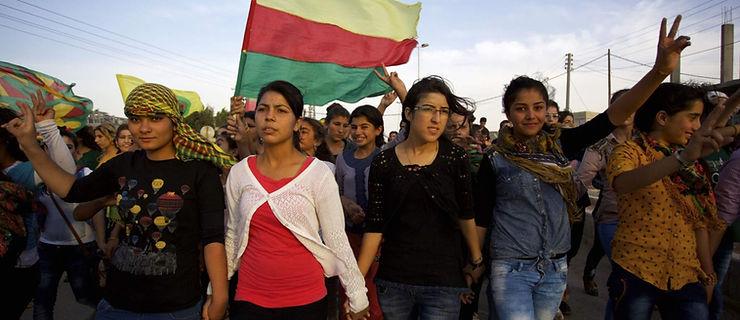
So finally we have to ask ourselves how did the revolution achieve this. How did it manage to continue expanding its democratic mentality and institutions and not fall back into statism and authoritarianism? This is a big topic and we cannot go into every detail here. The revolutionary practice of the Kurdish Liberation Movement deserves to be its own topic of discussion. But we can outline some of the fundamental factors that contribute to its success.
First of all, we must point out the willingness of the movement and its militants to reach compromises and trust in the capacity of society to find solutions. Abdullah Öcalan says that a militant should be “strict on the principles and flexible on the practice” and the elaboration of the Social Contract is a concrete example of this. While many in their situation would have chosen to either impose their ideology on the rest of society or isolate themselves to avoid the contradictions, they instead tried to include every part of society and every ideological force (except for fascist and Islamist ones). This is not just a tactical decision, but rather the result of a deep belief in the plurality of society and the need to create “unity in diversity”. At the same time it show their confidence in that, when given a fair chance, the ideas of the movements will be able to gain the trust of society through the example set by the militants.
Secondly, the role of women and the youth in protecting the principles of the revolution is also fundamental. This is because the movement has analysed that the first oppression that developed in history was that of the women and the youth. This was so because these are the sections of society that have a more active role in protecting and transmitting its social values. And therefore they had to be subjugated first in order to bring the rest of society under control. In consequence, the movement sees as necessary that both the women and the youth must organise autonomously at every level of society and take a vanguard role in the revolution. This is also the case in Rojava and North and East Syria, as it is reflected in the Social Contract. It is difficult to enumerate every example where this shows itself. But we at least can say that the victory against DAESH, which gave hope to the whole world, was mainly the result of the sacrifice of the revolutionary youth. And inside it, especially of the young women. And as the revolution has continued to expand and grow, it has always been the women and the youth who have pushed back against any reactionary tendencies, unwilling to give up the freedom they have conquered with their sweat and blood during the revolution.
Finally, we must mention the centrality of the “ideological struggle” in the Kurdish Liberation Movement. This originates in the background of the movement as an anti-colonial struggle. This can be traced back to the first declaration by Öcalan that “Kurdistan is a colony” all the way back in the early 70s. Out of this realisation, and influenced by the theories of anti-colonial thinkers, it was seen as necessary to not only physically liberate the land of Kurdistan but also to liberate the mind of the Kurdish people. Which meant replacing the mentality of an assimilated and colonised people with that of a “Free Kurdish Personality”. As the movement faced more and more pressure and repression over the years, Öcalan put more emphasis on this aspect as the source of the failures by the movement and especially by its militants. In response, from the mid-eighties and forward, a culture and practice of critic and self-critic, personality analysis and constant ideological education was developed in the movement. And one point Öcalan even declared that “5% of the fight is against the enemy, 95% is against oneself”. This was later reinforced with the increased focus on the liberation of women and the overcoming the patriarchal mentality. In 1994 in an interview with a journalist Öcalan declared that “Killing the man is the basic principle of socialism. It is about killing power, about killing one-sided domination and inequality, about killing intolerance. It is even about killing fascism, dictatorship, despotism.” By the killing of the man it was meant the killing of the patriarchal mentality that had taken root in society inside both women and men. And instead of it, a free, socialist and egalitarian personality started to be built. This is done mainly through education, understood in the broadest and most flexible way possible. This includes formal academies, but also informal gatherings and discussions and daily self-education. And especially the education by example, practised in every day life as well as immortalised in the heroic acts of self-sacrifice exemplified by the figure of the martyrs. To achieve this kind of way of life in which theory and practice becomes one is the aim of every militant in the movement, so that they can become an inspiration for the rest of society to live like this too.
The constant ideological struggle is part of the reality of North and East Syria as well as the rest of the Kurdish Liberation Movement. It is perhaps the characteristic that sets it the most apart from every other movement in the world.
This is important because, as we discussed at the beginning, the state does not only maintain its power over society through violence or intimidation. But works mostly by conquering the minds of people and developing in them personalities that serve it. So in North and East Syria, the battle against the influence of the state is not only being fought at the level of institutions and formal structures. In fact it mostly takes place inside the “hearts and minds” of people, as the agents of the state like to say. It’s being fought whenever the women’s movement organises an education about women’s liberation for Arabic women who used to live under the control of DAESH. Or in the schools where Syriac, Armenians, Chaldeans children and every other ethnic group studies while still being able to learn and practice their own language and culture. Or when internationalists come to the Internationalist Commune of Rojava to receive education and learn how to organise society. It is fought when the Rojava Film Commune releases a new film telling the history of the revolution. Or when the women’s movement produces a short musical video celebrating the struggle of women. Also when young women and men learn about self-defense and first aid so they can defend their society. Most of all it takes place during the heated conversations and debates sitting on the floor in the houses of the families and youth while drinking way too much tea until late in the evening. And it is fought every time the funeral of a martyr is celebrated and every time someone screams “Şehîd Namirin” or “Bijî Serok APO” until their throat hurts.
On the edge of the blade: the balancing act of living revolution
Ultimately, none of this is a guarantee of success. Nothing can ever be. There is still many contradictions existing in the revolution of North and East Syria and is possible that one day the pressures pushing towards counter-revolution and reactionary tendencies will become too strong and the revolution will lose its way until it dissipates. It is said that every revolution is destined to face the constant tension between trying to uphold the ideals that inspires it while making the compromises necessary to keep it alive. It can be compared to trying to stand on the edge of a blade, fighting to stay upright every second, every minute and every hour of the day from now until the end of time. Such is the reality of revolution and such is the job of a revolutionary. The Social Contract of the Democratic Autonomous Administration North and East Syria is an example of this complicated balance. It is neither perfect nor a complete capitulation. It is the expression of a real living revolution, in all its beauty and complexity, fighting to stay at the edge of the blade. Exactly where every revolution lives. The question then for us is, will we continue to avoid the blade or are we willing to face the contradictions of revolution even if it means risking some cuts?
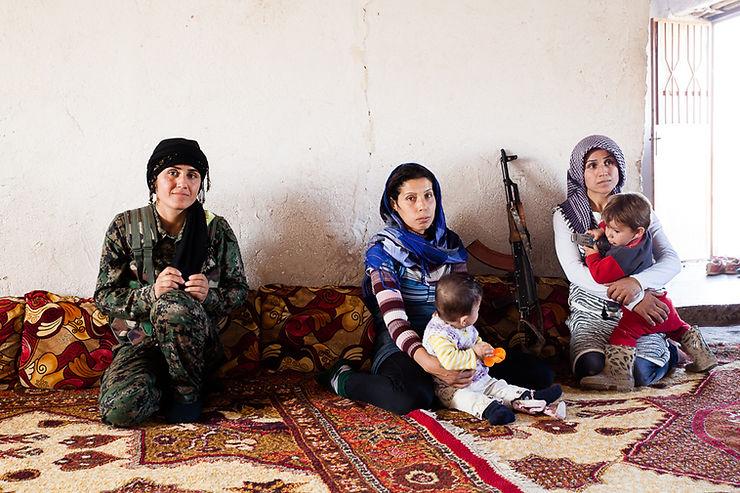
References
-
Beyond State, Power and Violence by Abdullah Öcalan
-
Manifesto for a Democratic Civilization vol. 3: Sociology of Freedom by Abdullah Öcalan: https://internationalistcommune.com/book-sociology-of-freedom-manifesto-of-the-democratic-civilization-by-abdullah-ocalan/
-
Charter of the Social Contract (2014): https://www.peaceinkurdistancampaign.com/charter-of-the-social-contract/
-
Social Contract of the Democratic Federation of Northern Syria (2016): https://internationalistcommune.com/social-contract/
-
The Social Contract of the Democratic Autonomous Administration of the North and East -Syria Region (2023): https://rojavainformationcenter.org/2023/12/aanes-social-contract-2023-edition/
